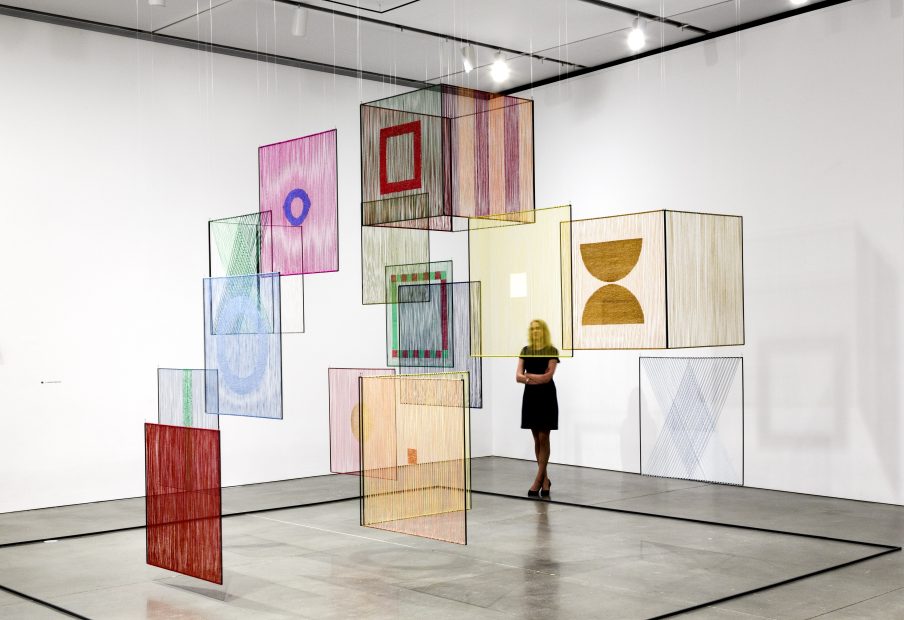
Elsi Giauque, Élément spatial (Spatial Element), 1979. Linen, silk, wool, and metal, twenty frames, each 35 3⁄8 x 37 3⁄8 x 1⁄4 inches. Mudac–Musée de design et d’arts appliqués contemporains, Lausanne, Switzerland. Photo by John Kennard.
“I want to do my part, humble as that part might be!”
William Ruhl is a Principal at Ruhl Walker Architects in South Boston. He supports the ICA in the present as a member, and has made plans to support us in the future by including the ICA in his estate plans with a bequest. We spoke to Will about his involvement at the ICA.
How did you first become involved at the ICA?
I got to know the ICA after moving to the Boston area after graduate school in 1988. I taught a design studio at the Boston Architectural Center and the ICA was in its original building around the corner on Boylston Street. I didn’t really become actively involved with the ICA until the new Diller Scofidio + Renfro–designed building was built on the waterfront, close to where I had been practicing architecture for more than 15 years. I’m a huge fan of the building as well as the art within! I became a member of the Director’s Circle soon thereafter and look forward to becoming even more involved in the near future.
The ICA may focus on the most provocative art of our time, but it also manages to humanize the art.
What have been some of your favorite ICA exhibitions over the years?
Too many to list! But some highlights include Leap Before You Look: Black Mountain College 1933–1957, especially Anni Albers’s Monte Alban; Fiber: Sculpture 1960–present, including Elsi Giauque’s floating Spatial Element; and Tara Donovan’s extraordinary exhibition in 2008 including her sculpture Nebulous, which was woven from strips of Scotch tape.
What do you feel the ICA does differently?
Boston and surrounding cities and towns have a long history of collecting and displaying art, but the ICA takes that many steps further by also engaging the broadest possible sense of community through the widest imaginable range of contemporary media. The ICA may focus on the most provocative art of our time, but it also manages to humanize the art.
Why is the ICA important to Boston?
Boston and Cambridge have an amazing collection of world-class art museums, but none match the ICA’s connection to our own time or thoughts of the future possibilities of art.
What have been some of your favorite ICA programs over the years?
I am a huge fan of the Artist’s Voice talks. William Kentridge’s talk in 2014, Mark Bradford’s in 2010, Damián Ortega’s in 2009, and Anish Kapoor’s in 2008 were all extraordinarily inspiring but also at times hilarious.
Why did you decide to include the ICA in your estate plans?
Having worked closely with community, wildlife, and educational nonprofits over the decades as both a parent and an architect, I have learned firsthand how much it takes to keep our nonprofit institutions going! Major donors are critical, of course, but so are medium and smaller donors. There is no amount that is too small, and it takes thousands of people to keep arts organizations such as the ICA going for future generations. I want to do my part, humble as that part might be!
Why do you think leaving a bequest to the ICA is important?
Bequests provide for substantial future influxes of funds, providing a lifeline for the ICA, but also allow me to continue to help the ICA after I’m gone.
To learn more about leaving a bequest to the ICA, please read more here, contact us at 617-478-3183 or jspsociety@icaboston.org.